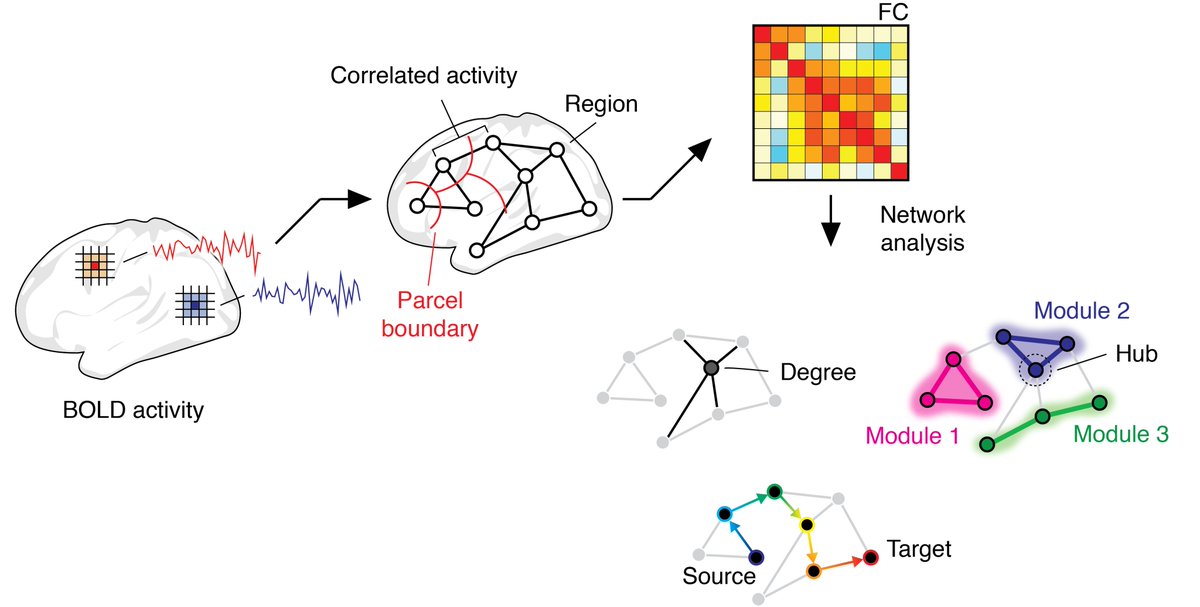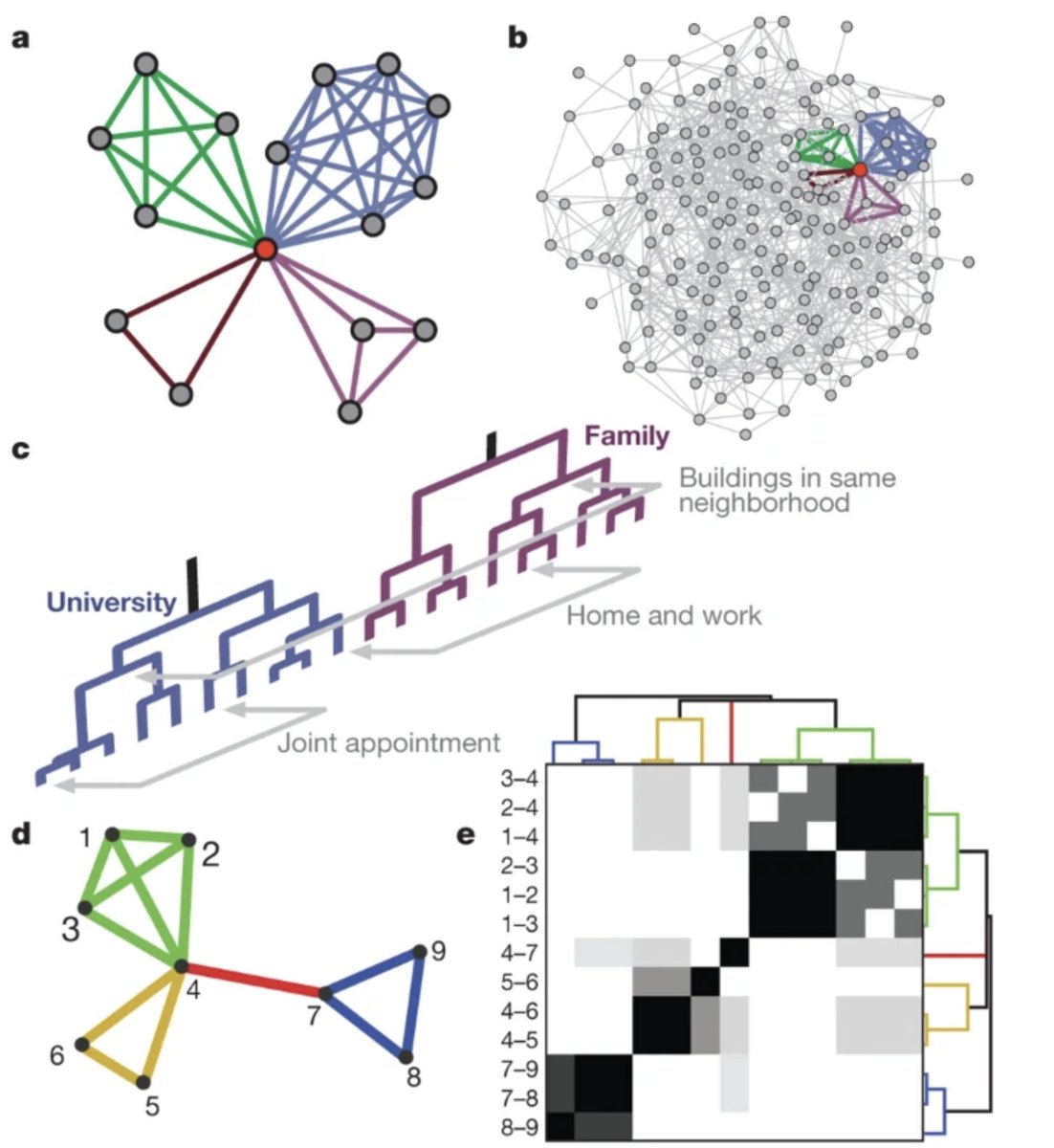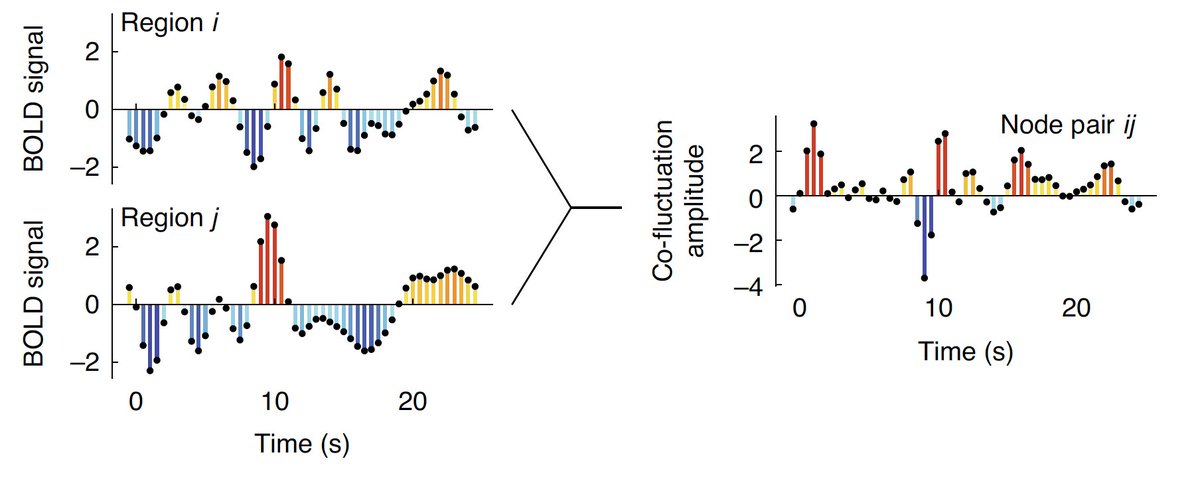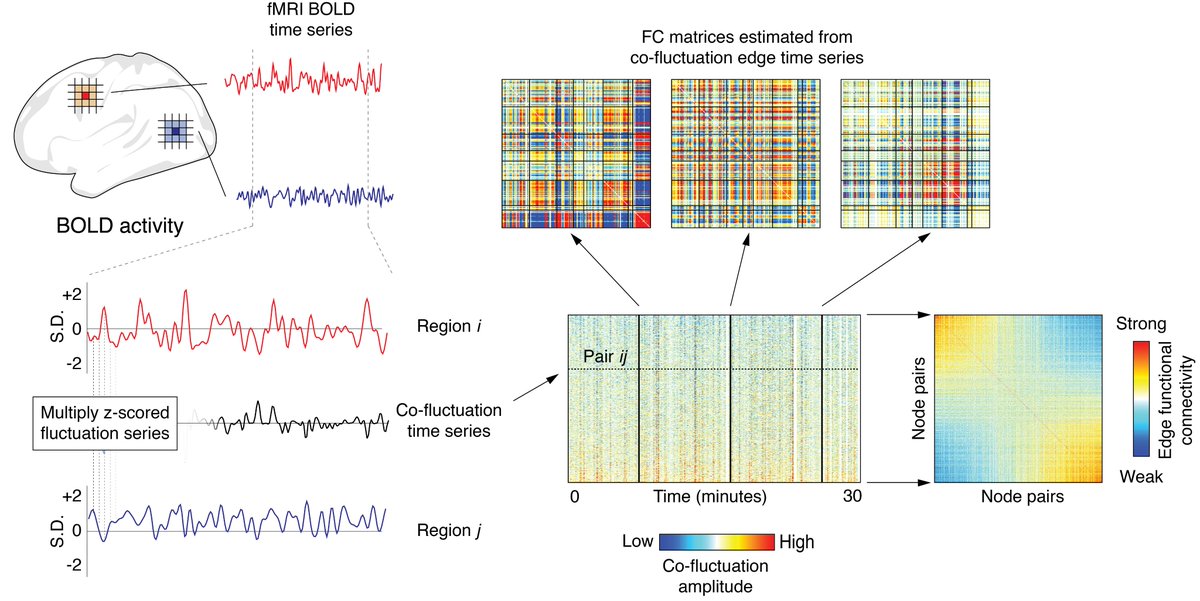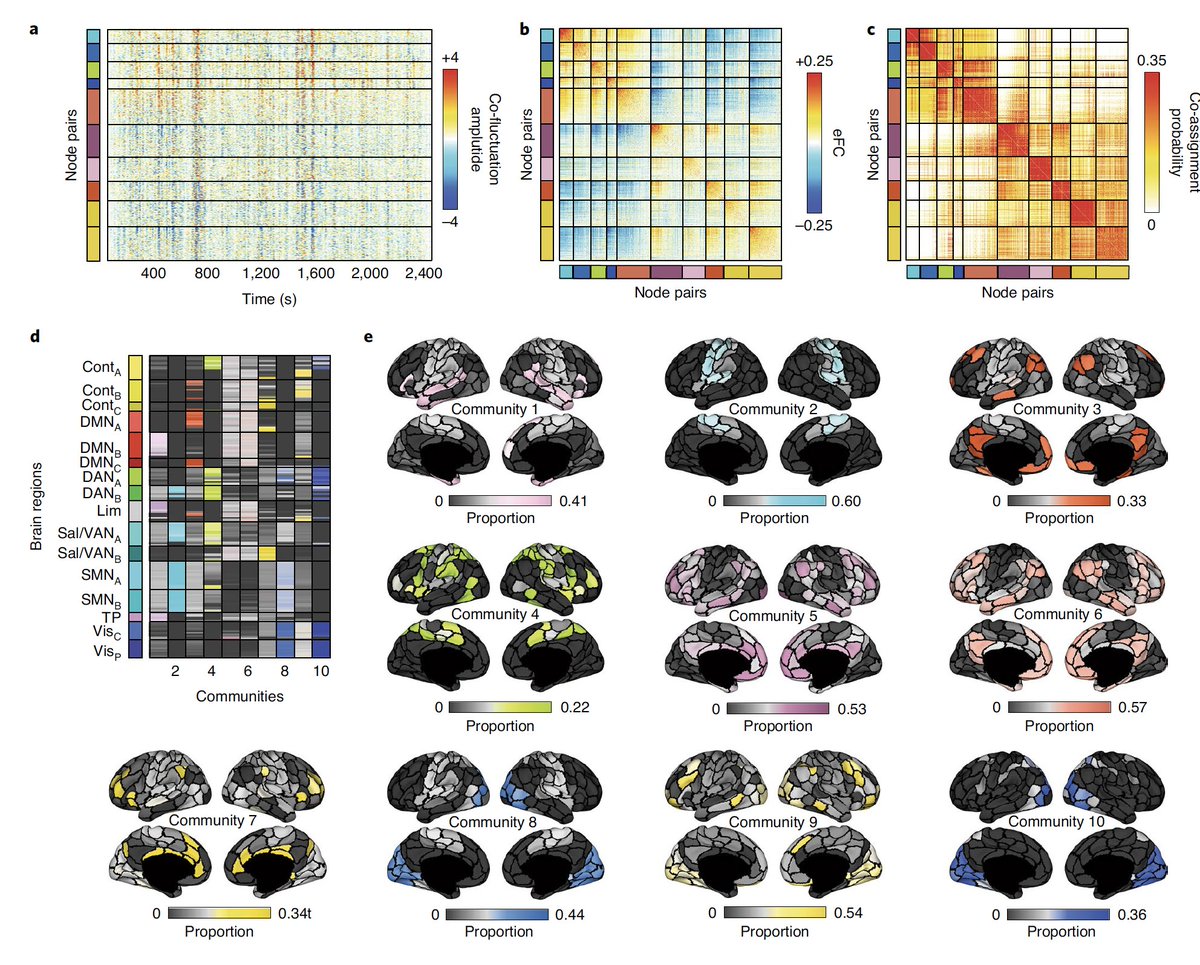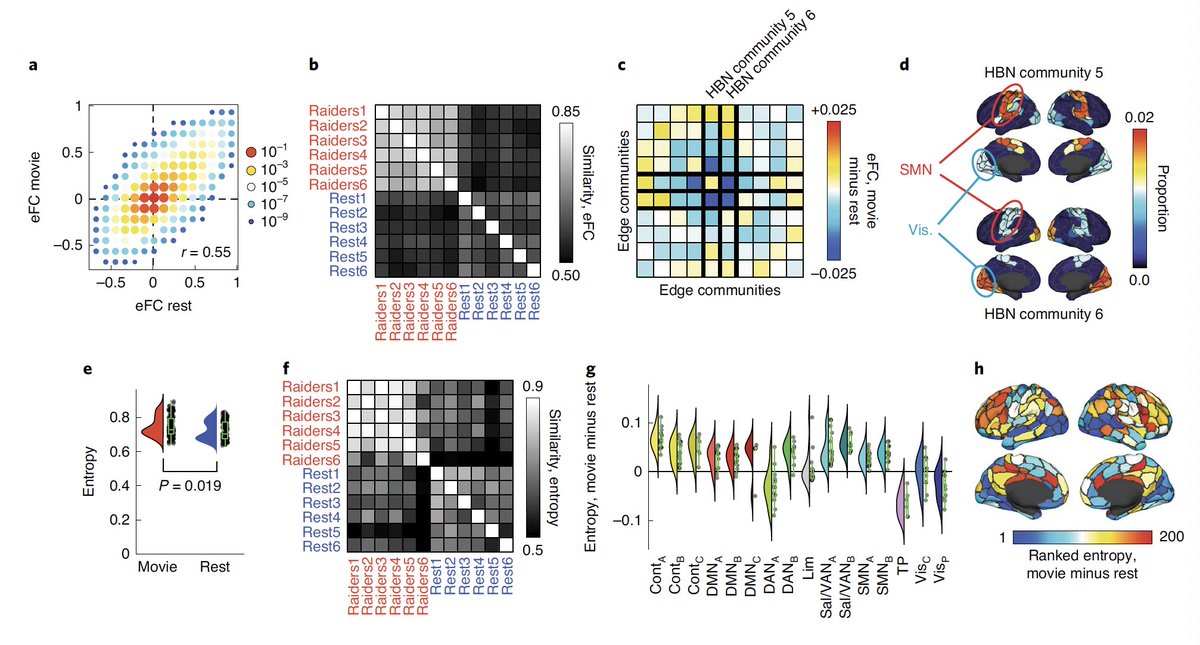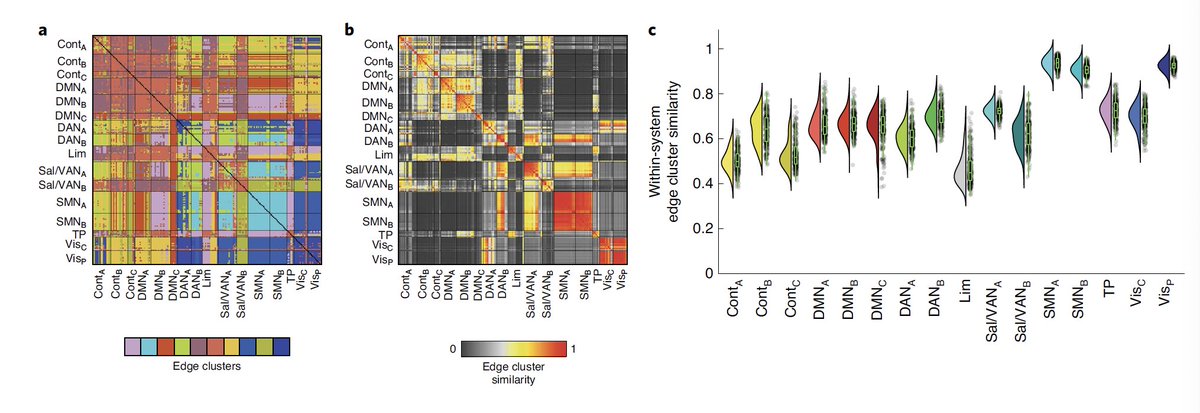A short thread on this paper: 1/n https://twitter.com/richardfbetzel/status/1318214098778206208">https://twitter.com/richardfb...
Over the past couple decades, we& #39;ve learned a lot about the structure/function of large-scale brain networks. Nearly all of this work has been propelled by a node-centric model of networks that place particular emphasis on properties of regions/populations/cells. 2/n
This is especially true of "functional connectivity", which is usually operationalized as the correlation magnitude of activity recorded from two brain regions (we& #39;ll come back to that in a moment). 3/n
Other scientific disciplines have developed frameworks for studying a network from the perspective of its edges rather than its nodes -- link similarity and line graphs are two popular strategies. However, they& #39;re not well suited for time series or fully-weighted graphs 4/n
So we thought -- is there an analogous way of transforming fMRI data in edge networks? Turns out there is, and it& #39;s eminently simple. 5/n
If FC is just the bivariate correlation of two fMRI time series, and correlation is just a time-averaged co-fluctuation, what happens if we never perform the temporal average? 6/n
We get a co-fluctuation or "edge" time series that indexes *when* the activity of two nodes deflect from their mean in the same or opposite direction. 7/n
If we do this for all pairs of regions, we get n*(n - 1)/2 co-fluctuation time series and can generate something we& #39;re calling "edge functional connectivity", which measures the similarity between pairs of pairs of nodes. 8/n
The edge time series are pretty amazing unto themselves and have lots of useful properties (stay tuned to this space, because we have another paper in press this week on precisely this topic). But this thread is about the edge connectivity paper 9/n
In that paper, we characterize properties of edge functional connectivity. The most useful of these properties comes from clustering edge functional connectivity. Because we assign *edges* to clusters and because each node is associated with many edges, the clusters overlap! 10/n
But this is a special kind of overlap. Rather than communities sharing a couple nodes here and there, overlap is pervasive, a cool property I& #39;ve talked about before 11/n https://twitter.com/richardfbetzel/status/1258080539178868738?s=20">https://twitter.com/richardfb...
We also show that edge connectivity is individualized and identifiable using @club_scan data. 12/n
It& #39;s modulated by sensory input -- eFC @ rest is not equal to eFC during movie-watching 13/n
Our work provides an alternative explanation for diversity of function within control networks -- control nodes participate in relatively few edge communities, but at the system level control networks are internally heterogeneous 14/n
Dig into the supplement and you& #39;ll find some brain-behavior associations, graph analyses, and a long list of checks/validations, many of which were suggested by three excellent reviewers, whose comments and criticisms turned this paper from "meh" into something "awesome" 15/n
Where does this leave us? This paper is a proof of concept and far from the last word. We show that an edge-centric approach can yield useful properties and organizational principles not captured by traditional node-centric models of brain networks. 16/n
But to be clear, the edge-centric framework doesn& #39;t overturn the thousands of papers using node-centric models of brain connectivity. We& #39;re just looking at the same data through a different lens, projecting it onto a different substrate hoping for new insight. 17/n
If you find this paper compelling and are interested in doing this kind of work, we have an NSF-funded postdoctoral position open. The intention is to extend this and related lines of edge-centric research. Please feel free to email me for more details. 18/n
I& #39;ll also use this opportunity to plug our other preprints on edge time series and edge connectivity (with many more in the works): https://twitter.com/Jo_Youngheun/status/1305533308617580549?s=20">https://twitter.com/Jo_Youngh...

 Read on Twitter
Read on Twitter